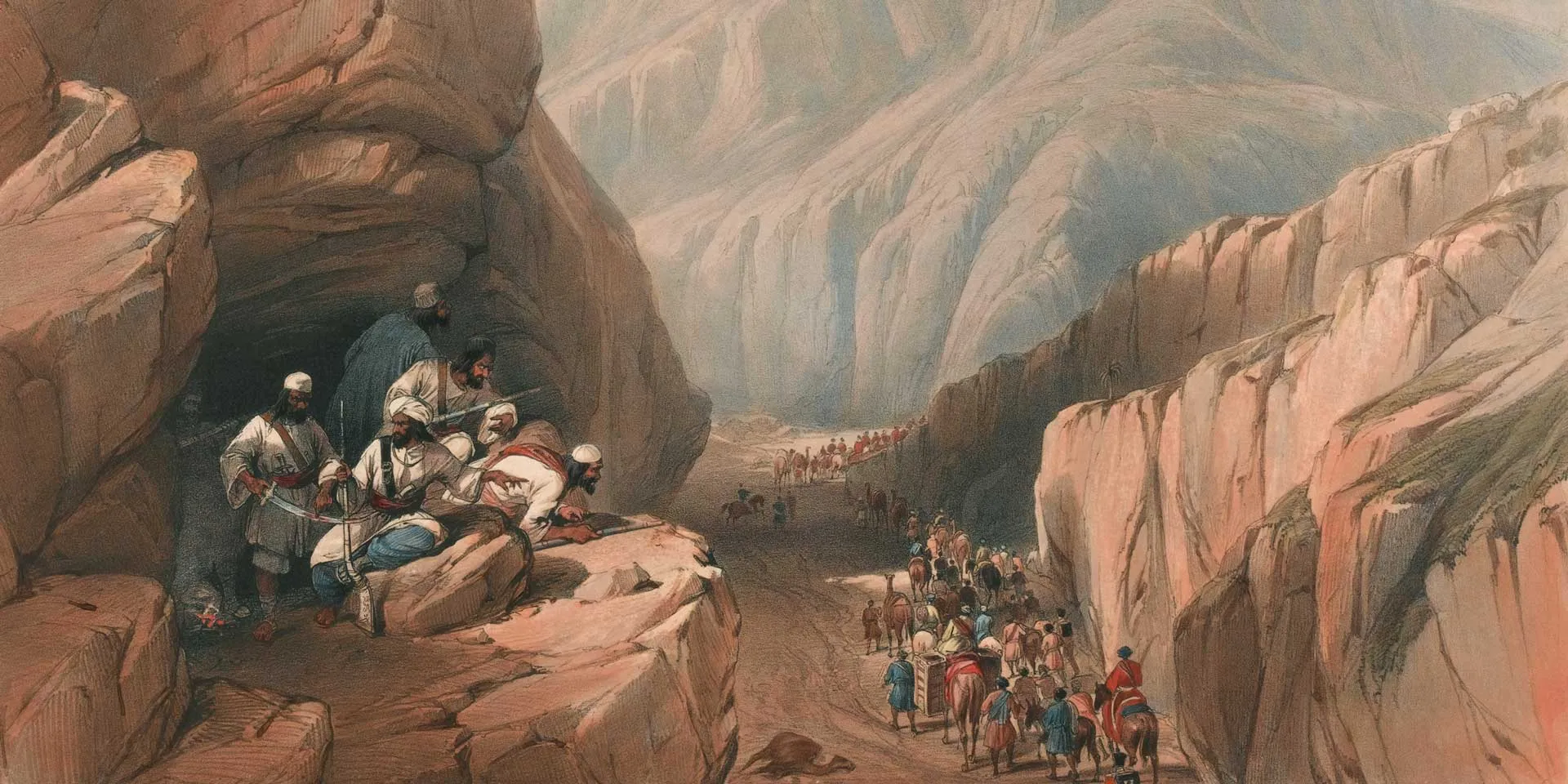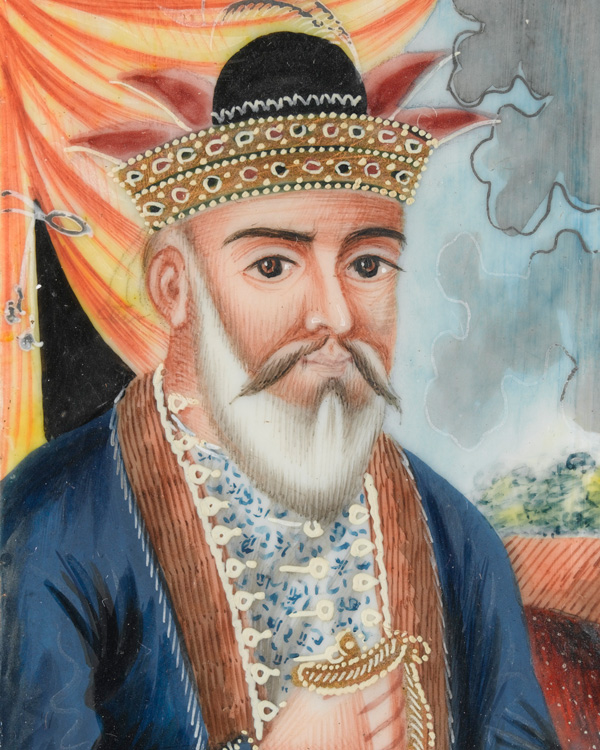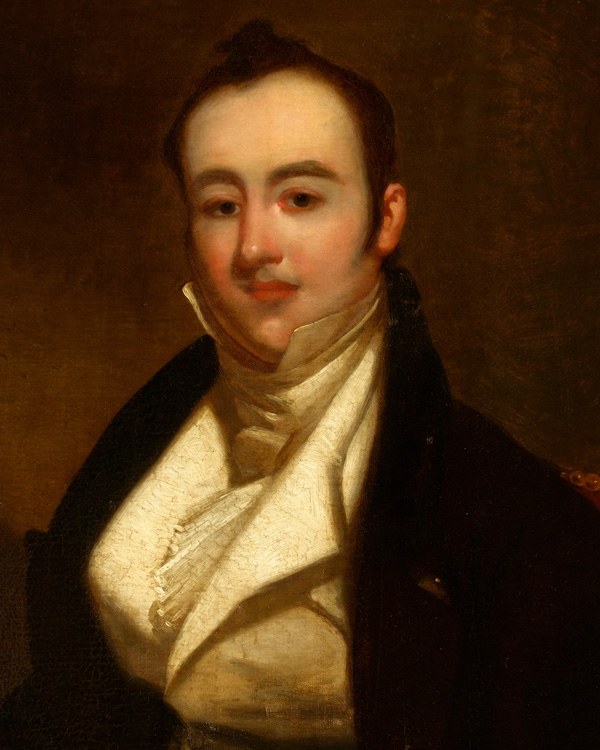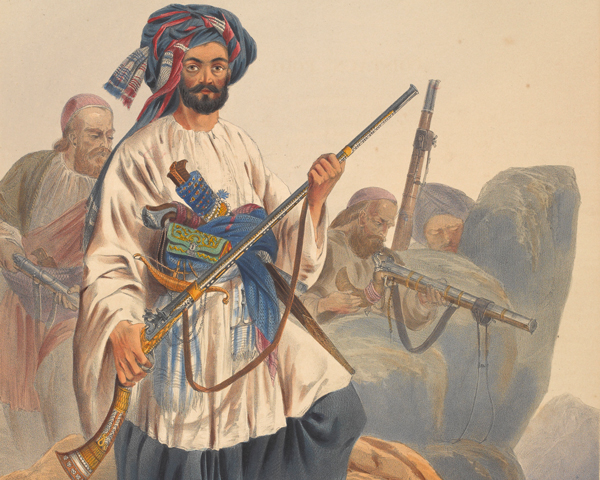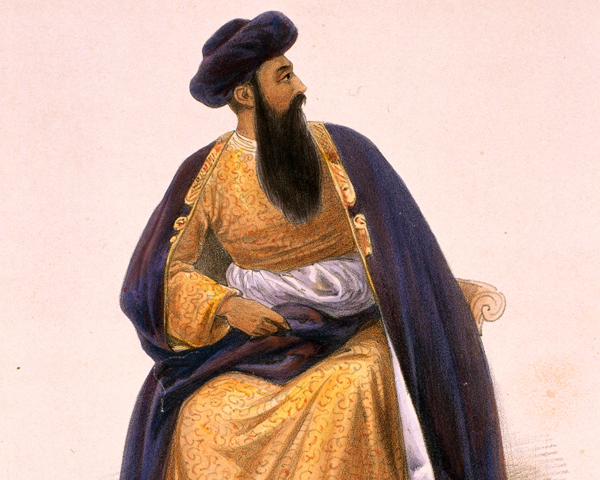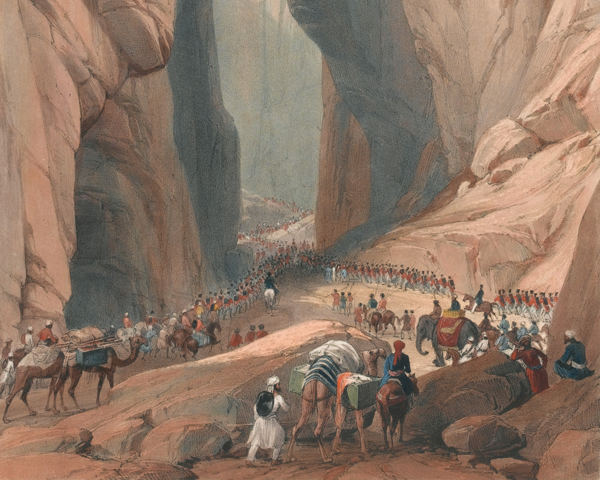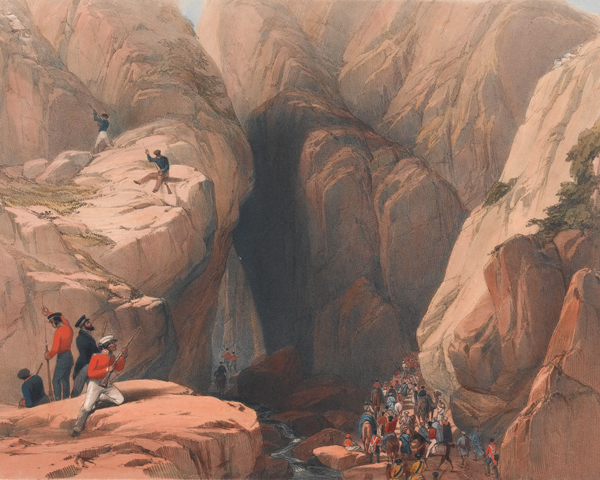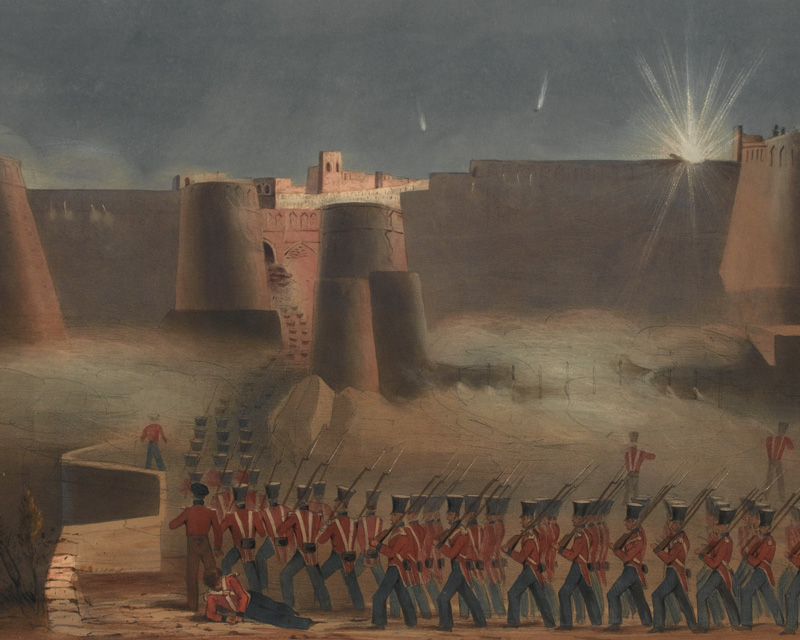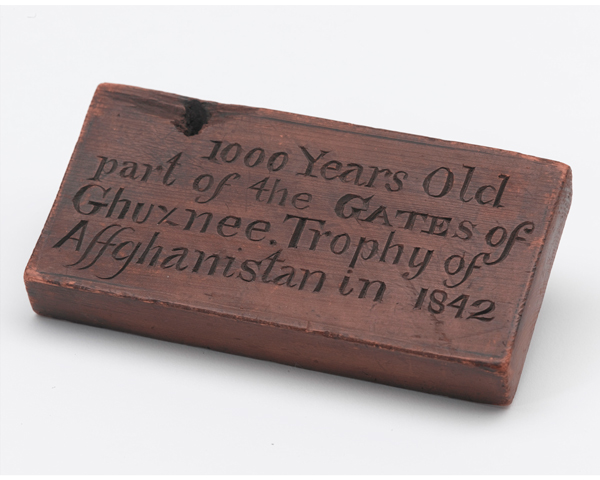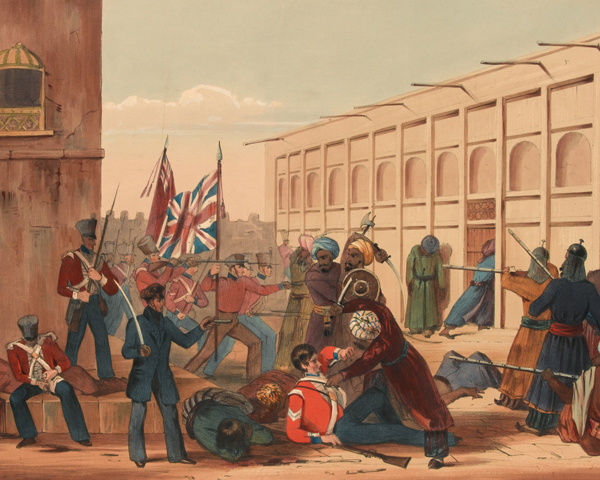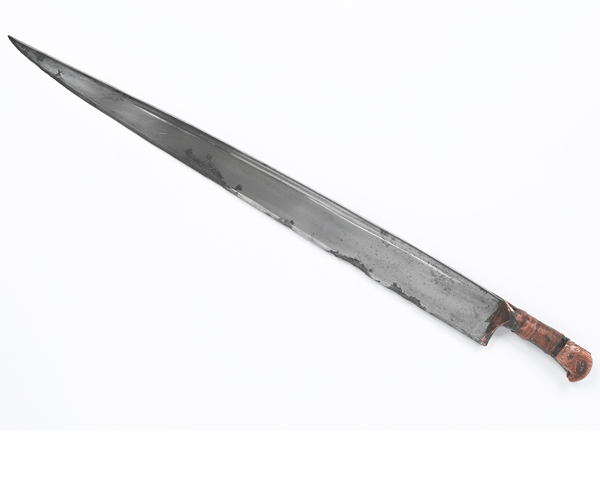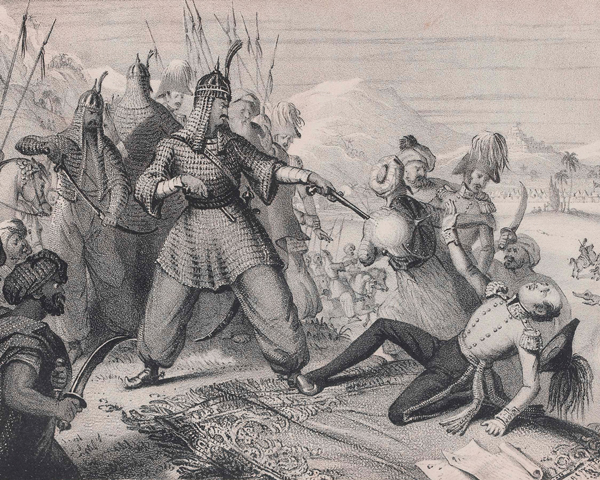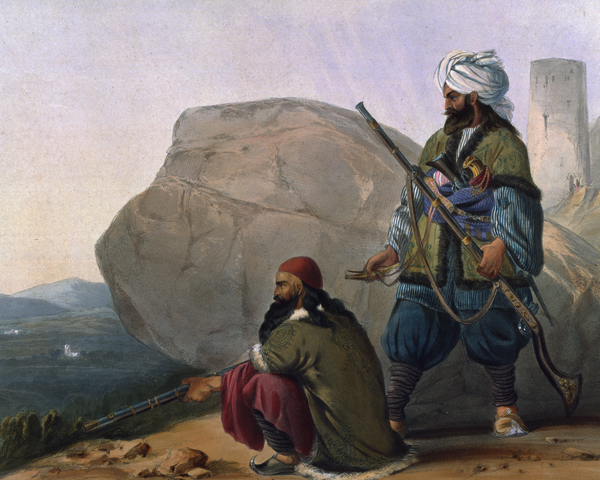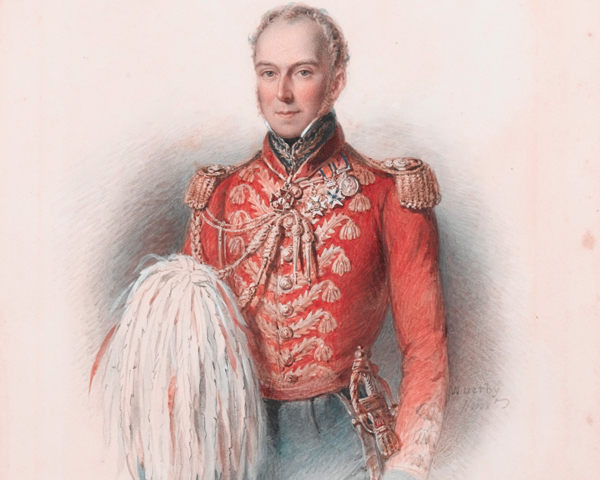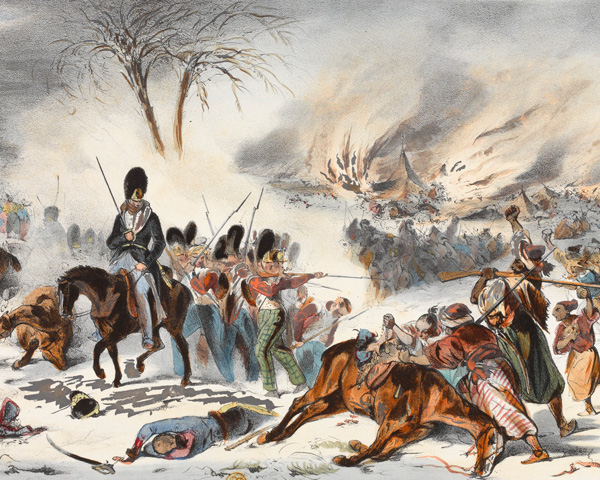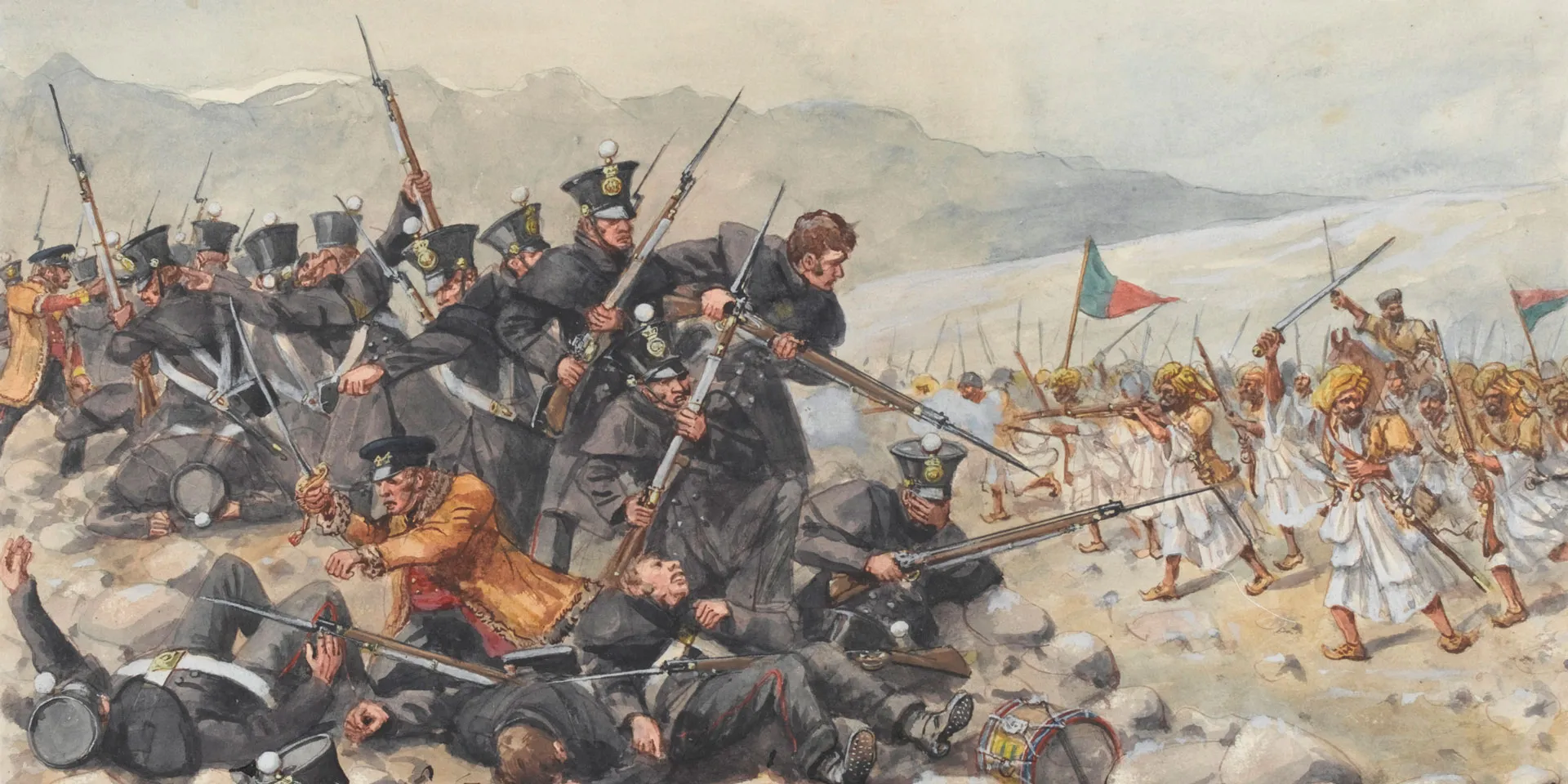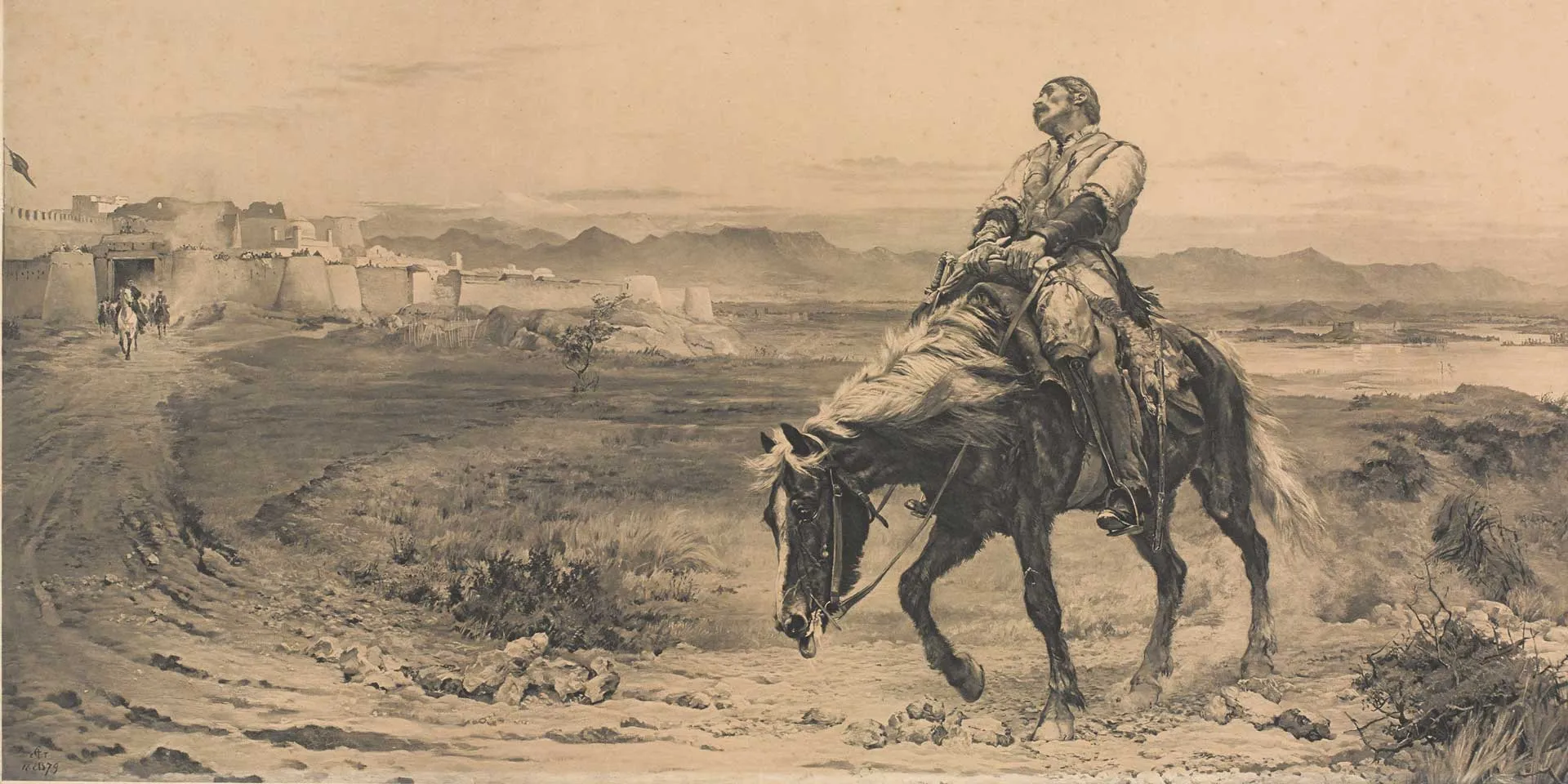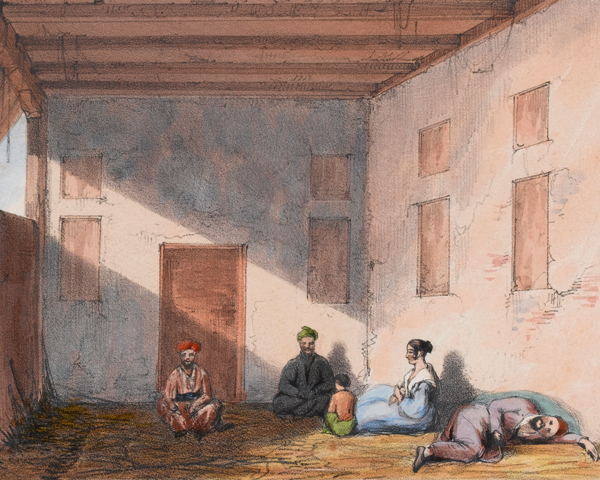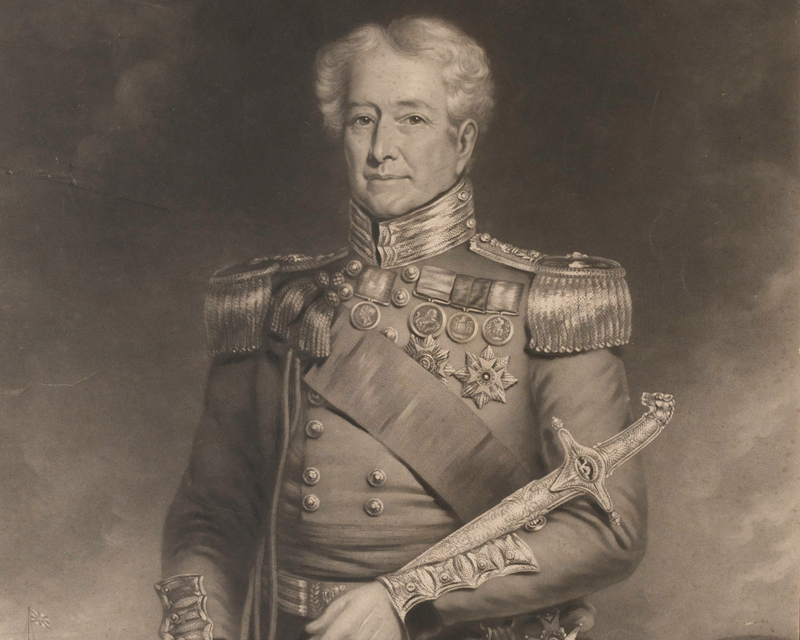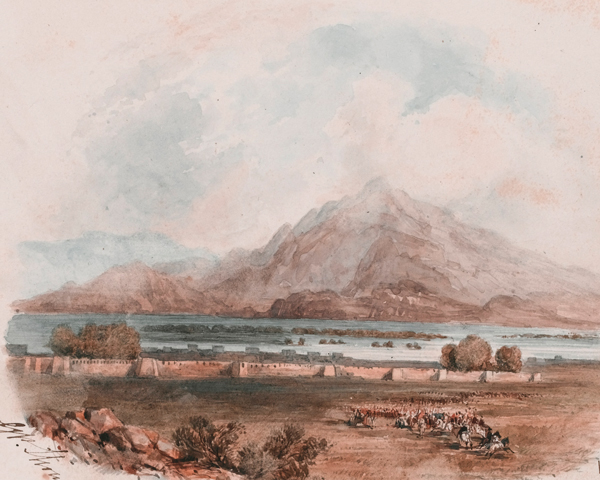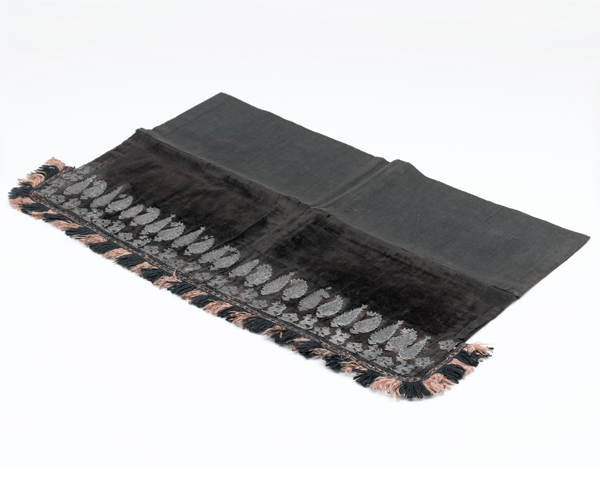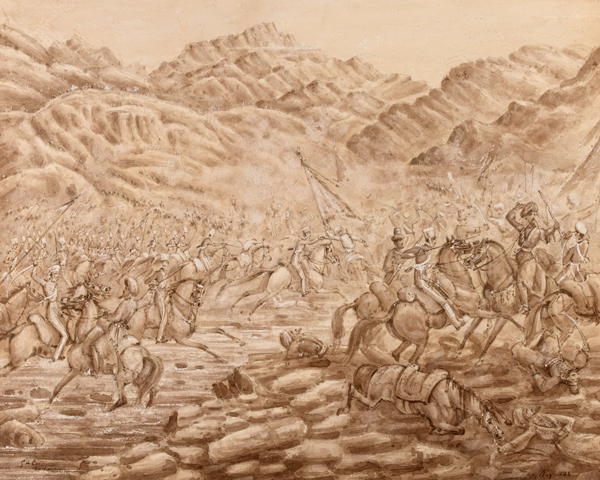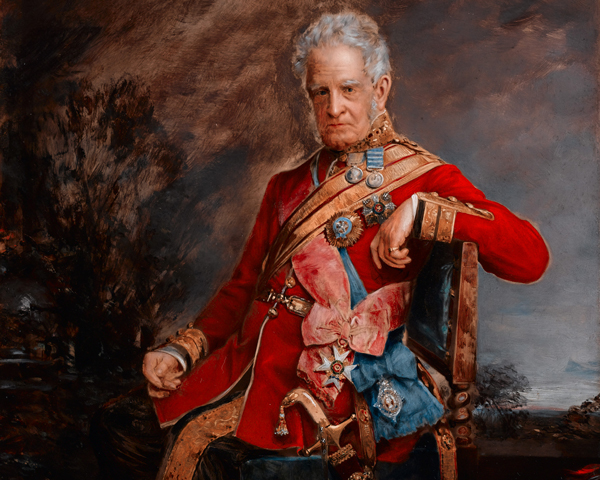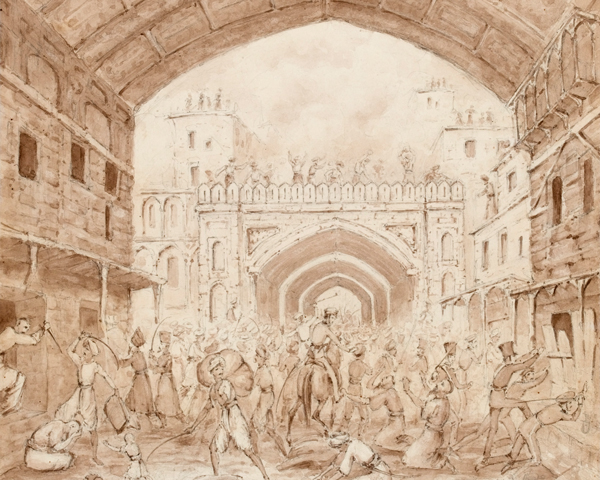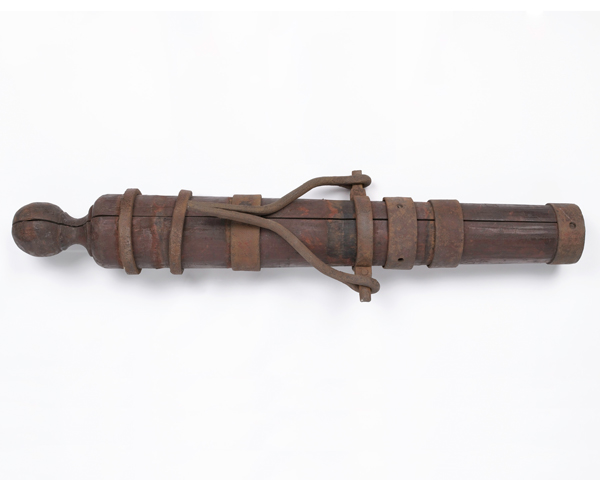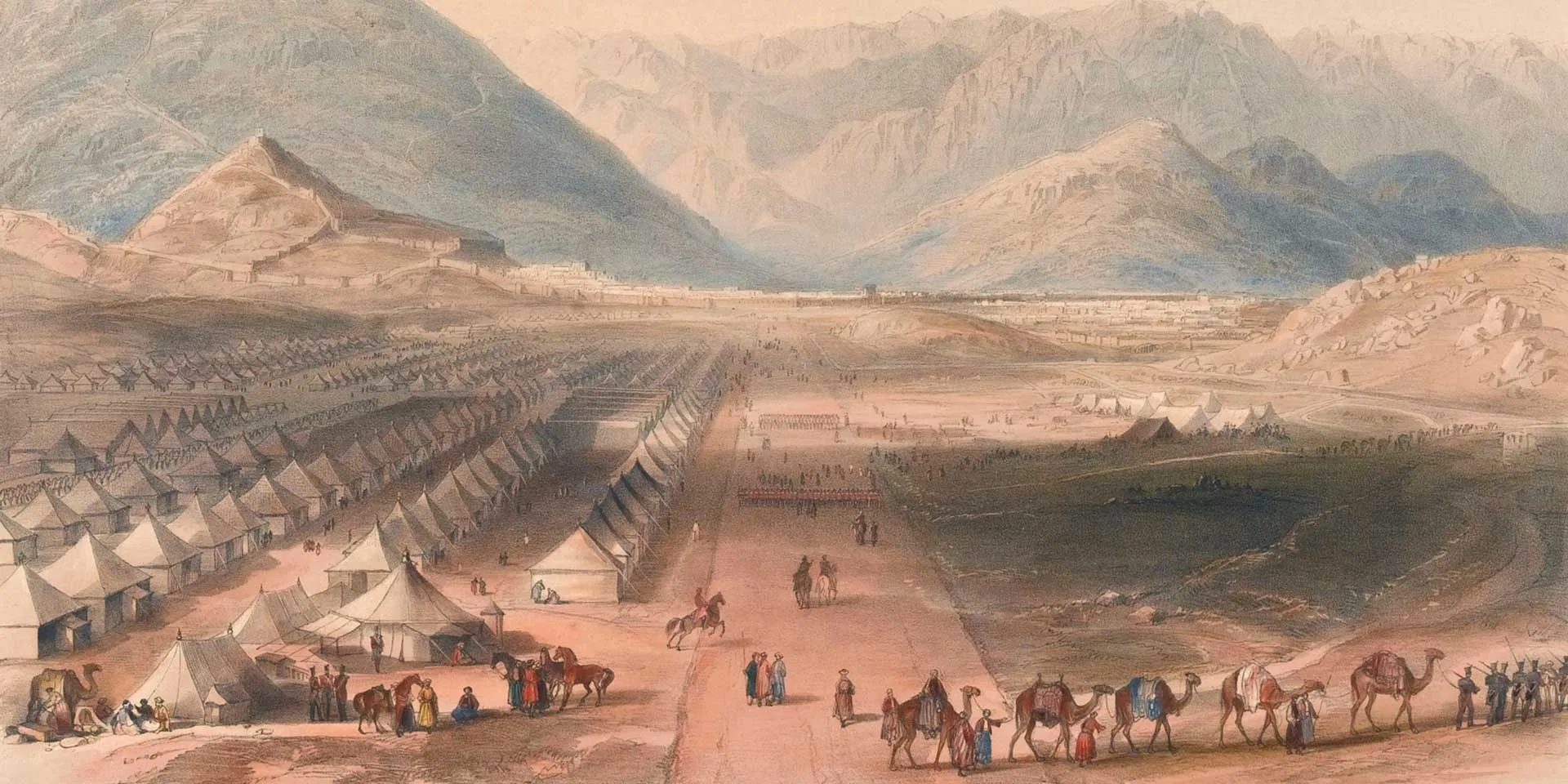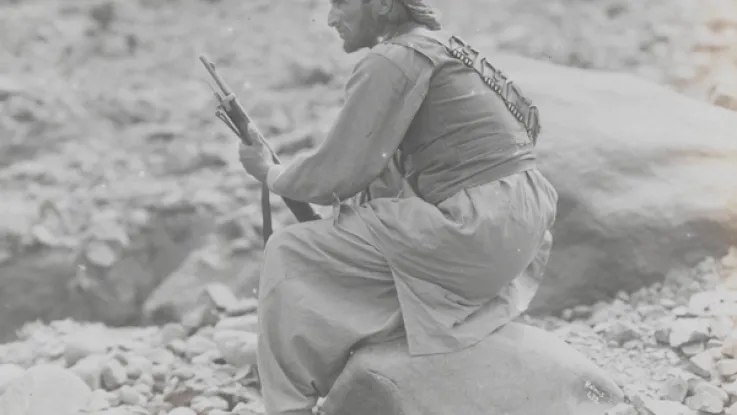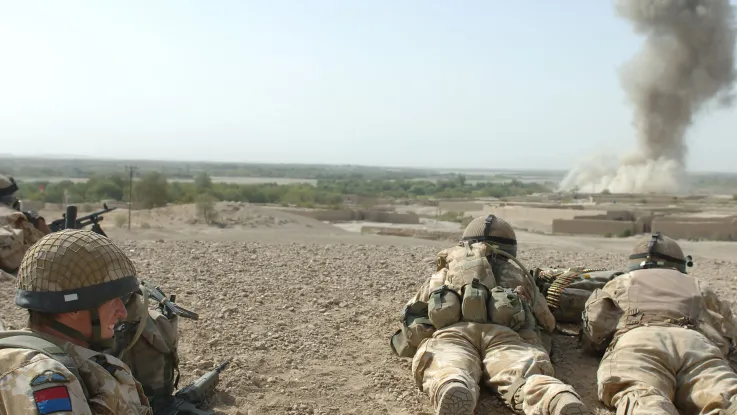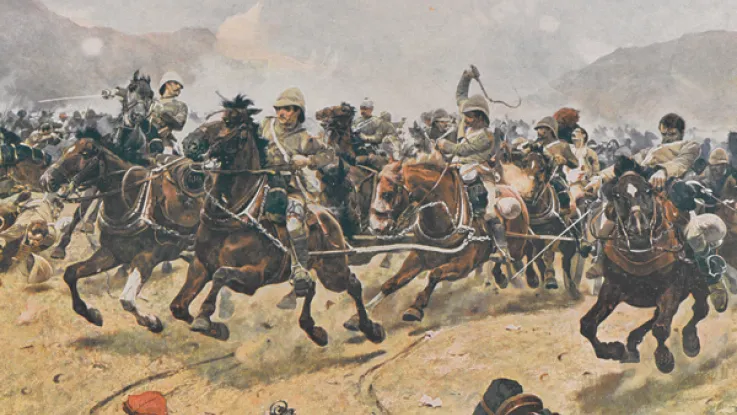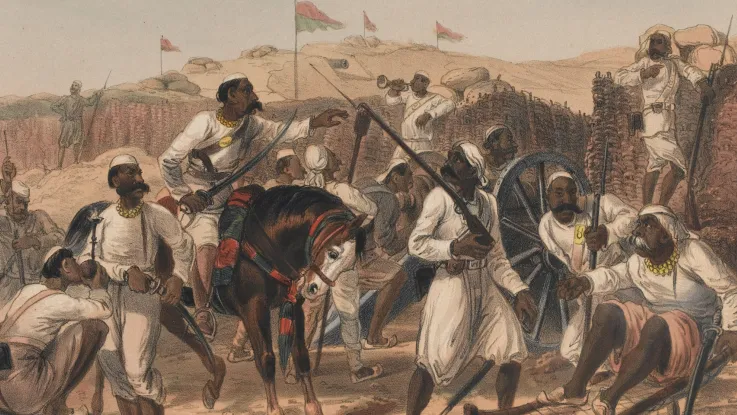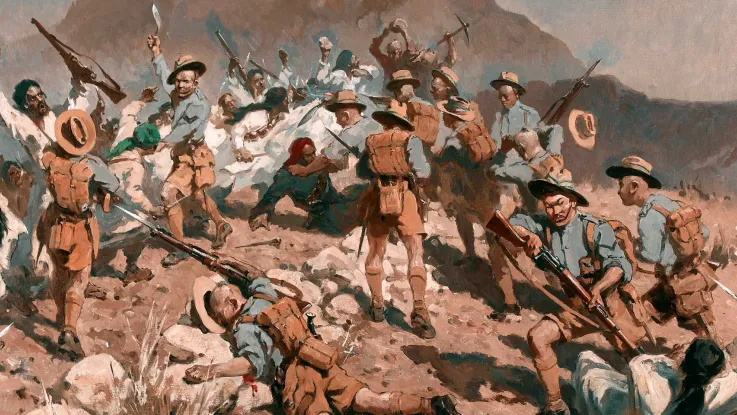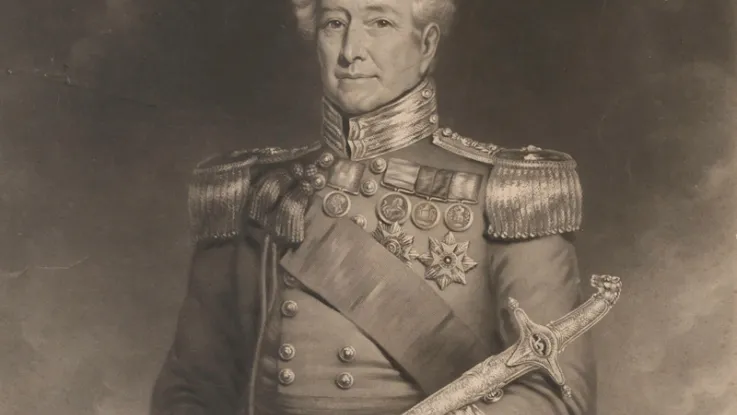Background
India was considered a critical component of the British Empire. Its protection was therefore paramount. Given Afghanistan’s important strategic position between India and the Russian Empire, the East India Company was keen to ensure that a pro-British emir was on the throne there.
In 1837, fearful of a Russian invasion of India via the Khyber and Bolan Passes, the British sent an envoy to the Afghan capital, Kabul, to gain the support of Emir Dost Mohammed Khan.
Regime change
Initially, the emir was in favour of an alliance with the British. But when they refused to help him regain Peshawar - seized by the Sikhs in 1834 - he prepared to talk to the Russians, who also sent an envoy to Kabul. This led Lord Auckland, the Governor-General of India, to conclude that Dost Mohammed was anti-British.
During the negotiations, a Russian-backed Persian (Iranian) army besieged the western Afghan city of Herat. An invasion of India via Afghanistan by foreign powers now seemed a firm possibility. The British therefore decided to replace Dost Mohammed with a former ruler, Shah Shuja, who was considered more amenable.
‘We have a beautiful game on our hands, if we have the means and inclination to play it properly.’Sir William MacNaghten, discussing the invasion of Afghanistan — 1838
Army of the Indus
In Spring 1839, General Sir John Keane led a 20,000-strong British-Indian force, the Army of the Indus, through the Bolan and Khojak Passes. The terrain was difficult, and the British were harassed by tribesmen en route, but they encountered no major resistance.
The invasion force captured Kandahar without a fight after its ruler, the brother of Dost Mohammed, fled to Kabul as the army approached in April. Leaving a garrison there under Major-General Sir William Nott, the main force then marched north-east towards Kabul.
After bribing many of Kandahar's tribal leaders, the British also organised a triumphant entry into the city for Shah Shuja.
Ghazni
The route to Kabul was blocked by Ghazni fort. This presented a major problem for the British as they lacked the heavy artillery needed to breach its thick 60-foot-high walls.
They only succeeded in storming it on 23 July 1839, after Mohan Lal - a Kashmiri interpreter, spy and assistant to the political officer Captain Sir Alexander Burnes - discovered that one of the gates was lightly defended.
In taking the fortress, the British suffered 200 men killed or wounded. The Afghans lost nearly 500 men, with another 1,600 captured. Ghazni was also well-supplied and its provisions eased the British advance on Kabul.
Dost Mohammed fled from Kabul and Emir Shah Shuja was duly installed in August. However, the British could not afford to keep troops in Kabul indefinitely. Preparations were therefore made to withdraw the majority of them.
Action at Khelat
On its way back to India, the Army of the Indus inflicted punishment on the Baluchi Khans of Khelat (Qalat). This was because of their constant attacks on British supply lines.
After fierce fighting in the surrounding hills, the walls of Khelat were successfully stormed and the city captured. A small force was then left to garrison the town.
Unrest in Kabul
The British had left political envoys and a small garrison in Kabul. But their numbers were swelled by thousands of mostly Indian servants and camp-followers. Popular opposition to Shah Shuja and resentment of the British grew, especially after the subsidies paid to local tribal leaders in return for their support were cut.
The perceived arrogance of the British, as well as cultural insensitivity and a string of sexual scandals, inflamed the situation. Things got so bad that the garrison evacuated the city on diplomatic grounds. The soldiers could have occupied the formidable Bala Hissar fort, but instead moved into a poorly-situated camp outside the city.
Revolt
The unrest in Kabul soon escalated into an insurrection led by Dost Mohammad's son, Muhammad Akbar Khan. The British diplomats, including Sir William MacNaghten, were murdered and the garrison was eventually forced to surrender.
‘The most incompetent soldier who ever became general.’General Sir William Nott on Sir William Elphinstone — 1842
Retreat
The British commander, General Sir William Elphinstone, then negotiated a withdrawal. The terms he accepted included surrendering his gunpowder reserves and most of his cannon.
In January 1842, the Kabul garrison of 4,500 British and Indian troops, along with 12,000 camp followers, marched out of the city with the promise that it would be allowed to retreat to India in safety.
On leaving the city, Elphinstone discovered that the escort promised by the Afghans had not materialised, neither had the food and fuel to help with the crossing of the mountains in winter.
His junior officers pleaded with him to turn back to Kabul as they still had time to take refuge in the Bala Hissar. Elphinstone ignored this and ordered them onwards.
Death in the snow
The column came under immediate attack from the hill tribes as it struggled through the cold, mountainous terrain. The Afghans sniped with their long-barrelled jezails - guns that outranged many of the British and Indian troops’ muskets. They also launched raids on the column and picked off stragglers.
Only a few troops escaped the final massacre at the Gandamak Pass. Most of the Indian sepoys were killed. Several hundred were later sold in Kabul's slave markets. Just one European reached Jalalabad, Dr William Brydon.
‘I had fortunately, only one ball in my arm; three others passed through my poshteen near the shoulder without doing me any injury. The party that fired on us were not above fifty yards from us, and we owed our escape to urging our horses on as fast as they could go. The sight was dreadful, the smell of the blood sickening; and the corpses lay so thick it was impossible to look away from them, and it took some care to guide my horse so as not to tred upon their bodies.’Lady Florentia Sale describing the Retreat from Kabul — 1843
Hostages
The only other British survivors were the soldiers, wives and children still in Afghan hands. Some had been taken prisoner. Others, including Elphinstone who had abandoned his men, volunteered to be hostages in an effort to secure safe passage for the rest of the garrison.
Jalalabad
Earlier, in October 1841, Major-General Sir Robert Sale had been sent from Kabul with a force to clear the passes to Jalalabad as the first stage of a planned withdrawal. His brigade had to fight its way through and he was forced to take refuge in Jalalabad fort.
Under siege
Despite orders from Elphinstone to return, Sale decided it was impossible to fight his way back. Resisting his personal desire to return to protect his wife and daughter, who were in the Afghan capital, he at once set about preparing the half-ruined fortress for a siege.
The ramparts were widened and the parapets raised. In addition, cover outside the walls was removed by demolishing buildings and filling ditches. As soon as the Kabul garrison had been destroyed, Akbar Khan joined the Afghans already besieging Sale at Jalalabad.
Relief
In an effort to relieve Sale, the British now despatched the Army of Retribution from India under Major-General George Pollock.
Hearing rumours that Pollock's force had been prevented from entering the Khyber Pass, Sale mounted an all-out diversionary attack on Akbar Khan's army on 7 April 1842. During this assault, Akbar's camp was fired and plundered. Soon after, Pollock’s men arrived.
To Kabul
Pressing on, Pollock defeated Akbar Khan at Jagdalak and Tezeen, finally reaching Kabul in September 1842. There, he was joined by Nott’s Kandahar force. Since the uprising, Nott had successfully defended Kandahar and then relieved the besieged garrison at Khelat. Next, he had been ordered to return to India via Kabul.
While in Kabul, Pollock rescued 95 British hostages. Then, in a pointless act of revenge, he destroyed the citadel and bazaar as a ‘lasting mark of just retribution'.
On 12 October 1842, Pollock departed for India, via Jalalabad and the Khyber Pass. The East India Company had decided that occupying Afghanistan would cost too much, in both men and money, and withdrew.
Aftermath
By this time, Emir Shah Shuja had been murdered by the supporters of Akbar Khan. Dost Mohammed Khan, who had handed himself into British custody in November 1840, was quietly released.
He returned to Afghanistan and resumed the throne, reigning until his death in 1863. With some exceptions, his relationship with British India was friendly, and from 1855 regulated by treaty. He was succeeded by his son Sher Ali, who continued his father's policy.
The Kabul disaster had undermined the Company's reputation for military invincibility. This served to embolden local powers like the Sikhs, who would come to challenge the British in the 1840s. It also eroded morale within the Bengal Army, the force that sustained most of the casualties, thereby sowing the seeds of discontent that would contribute to the outbreak of the Indian Mutiny in 1857.

